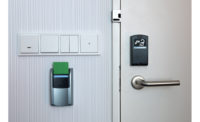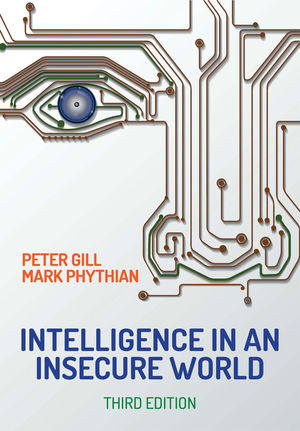Connected locks may get overlooked by some dealers, but as they have begun to grow in popularity, it’s time for dealers to give them prime consideration. Not only are they convenient and easy to install, they can also help dealers generate revenue. And while many might still view them as a cool gadget or an unnecessary accessory, the truth is these locks are safer and more convenient than traditional keyed locks, and they are probably one of the best ways for dealers to get their customers to interact and feel comfortable with home automation and home security.
1. THEY ARE INCREASINGLY POPULAR
While many think of connected or smart locks as a novelty for homeowners, the popularity and functionality of the products are definitely increasing as multi-unit residences begin to see a greater demand for them. “The majority of the market now is through single-family dwellings,” says Nick English, North American sales manager, residential access solutions, Kwikset, Lake Forest, Calif. “However, a very big, growing portion of the market is for multi-unit complexes.”
Henning Overgaard, CEO and founder of Danalock, Aarhus, Denmark, says, “I think the biggest obstacle is to get [dealers] to understand that we are entering a new world where this is a product that is part of everybody’s day-to-day, and that’s really what we have to explain. Like it or not, it’s there, and will grow in the future.”
Overgaard says some installers are very eager to install smart locks and some are very conservative. They are separated within the industry. However, the popularity of connected locks can be a boon to the dealer who becomes familiar with the technology and turns it into a revenue-generating installation.
2. THEY ARE A SECURITY-FIRST TREND
While the smart lock seems to be a trendy smart home accessory, they are not best thought of as a convenience — they are primarily designed for security. “Remember that you want a great lock to start,” says Rob Martens, futurist at Schlage Smart Home, Carmel, Ind. “It is a security device first and foremost — a cool, connected consumer tool second. We see features and functions introduced at times that focus on convenience and gadgetry ahead of core security — something to be very aware of.”
Martens cites key control as a good example: “If you aren’t changing the deadbolt out — rather simply placing an automated/connected thumb turn, you have not addressed the fact that anyone who has a copy of that key can still use that lock.”
When done right, however, the connected lock’s superior security can be an important selling point.
“You don’t need your physical key anymore,” Overgaard says. “You don’t have to worry about copied keys and giving your kids keys they might lose. The last thing a teenager is going to lose is their smartphone. So we give them the key using their smartphone.”
Without the physical keys, temporary keys can be given, people’s keys can be canceled, and doors can lock automatically if a homeowner forgets to lock them. “The homeowner can now, on most electronic keypads, go change the codes themselves,” says Casey Camper, certified master locksmith and industry trainer from Security Concepts, Denver. “The new connected locks offer parents the ability to remotely unlock the locks when kids come home from school and call them, or the parents can send their kids an electronic key on their own smartphones.”
This can also work for people renting out their cottages or using services such as Airbnb; now they no longer have to meet with the person they are renting to but can simply text or email them an electronic key. As security goes, no one can make a copy of the key. After their time is up, their electronic key simply stops working.
3. PRO INSTALLATION IS PREFERRED
Go to Home Depot, Lowe’s, or any other home improvement store, and you will see smart locks sold with other DIY offerings. The benefits of a connected lock, however, are best realized when professionally installed and part of an overall connected security system.
Overgaard sees the smart lock market growing significantly in the near future. Having these locks professionally installed, he says, benefits both the end user and the dealer. “In the next few years I think 60 to 80 percent at least will be installed by professionals or resellers, but not the end user.”
He says the connected lock is not a true DIY product because sellers have to offer installation. That’s why Danalock began selling primarily to dealers and integrators. “We as a company have changed our strategy. What we saw was a DIY product at Home Depot and Best Buy and so on, we offer now as a product to be sold with installation.” Overgaard also says he believes the home improvement stores will begin offering installation as an option when customers buy these products.
“When you’re setting up an entire automation system or security with automation,” English says, “it’s preferable to have a professional install it or help with that. A lock is no different than a home security system in general. How comfortable does [the end user] feel installing their system, creating the correct mesh network, the most optimum system, learning that device into the platform, setting it all up?” and although anyone can switch out a door lock, English says it’s the designing of the optimum system that makes professional installation preferable.
4. THEY LEAD TO RMR
One of the greatest draws of the connected lock for dealers is the frequency with which customers will interact with the products. More so than a security alarm, smart thermostat or maybe even cameras, homeowners will interact with their locks every day because, let’s face it, everyone locks their doors.
“If your customer is planning to utilize recipes, scenes or routines, the door is one of the most important leaping-off points,” Martens says. “In addition to being the starting point for so many things, edge devices like door locks provide great peace of mind for customers. In fact, connected home usage data [from Parks & Associates] demonstrates that people check the status of their door locks and garage doors more frequently than any other connected home item.”
Patrick Bleser, national sales manager, Yale Locks & Hardware, Berlin, Conn., agrees and says once you get past the “shiny new toy” aspect of the smart lock, what benefits the dealer is he is offering a product that is going to get his customers engaged with using their security systems, and the RMR that generates. “If I use that lock multiple times a day, which I will because it is on my door and I walk in and out of my door multiple times a day — in doing that I am interacting with my security system: arming it, disarming it, driving home automation, whether that’s lights coming on or triggering video clips and events. I’m going to be more engaged with that system, and that monthly charge is going to be much more meaningful to me.”
Bleser says customers are going to feel more comfortable paying for the system; they won’t want to lose those services by not paying; therefore, it increases dealers’ customer retention by keeping them engaged. “They don’t at some point throughout the year say, ‘I only arm that system two times a year when I go on vacation — do I really want to keep paying this bill?’ It changes that whole mentality to where it becomes part of their daily routine.”
Along with that, he says, dealers are able to charge more for the extra services, adding to their RMR.
“If you’re offering just basic home security, you might spend $30 or $35 a month as a homeowner,” says Kwikset’s English. “But if you’re doing full automation and adding a lot of other peripherals to the system, then the monthly recurring fee is usually in the $40 to $50 — sometimes $60 — per-month range. So the opportunity for the installing dealer to make more money on the recurring revenue basis goes up by offering these products. Not only do you keep a customer happier and longer, but the monthly amount they’re paying for this system is higher.”
5. All You Need Is a Phillips Head Screwdriver
English says most dealers are open to smart locks, but there remains a perception that they are difficult or time consuming to install. “That really isn’t the case. These things can be installed in 10 to 15 minutes, and when you get really good at it, probably in 7 to 8 minutes. It’s well worth the investment for the dealers to train their staff.”
There are several steps a dealer can take to inspect the doors and ensure the locks are compatible, but besides that, most installations are simple retrofit swaps that involve pairing the lock with the network (generally a one-step, self-programming process), and then removing the old lock and screwing in the new one. The only “wiring” an installer would do, English says, is lining up the pin plugs on the outside and inside (of the door) parts of the lock as you’re installing. “You literally just slide those two things together, and that’s as much ‘wiring’ as you do.”
Of foremost importance when preparing to install a connected lock, says Bleser, is to make sure the door is an ideal door on which to install one of these locks. “If you have a door that isn’t properly aligned, where you have to put your hip into the door to latch the deadbolt, don’t install the lock on that door. If that deadbolt is rubbing against the frame every time it locks, it isn’t going to lock properly, it’s going to wear down the batteries, and you’re going to have a frustrated customer.”
More important is understanding the limitations of a network and ensuring you have a strong mesh network so the lock is not struggling to read the signals. The ideal proximity of a lock to a network base is less than 30 feet, but without the strong network throughout a house including necessary repeaters, the locks will struggle to send and receive signals and will not be as efficient.
“When you enroll a Z-Wave lock into the panel, regardless of whose lock it is,” Bleser says, “you need to remove the lock from the panel before enrolling it.” He explains that companies put their locks through quality-control processes when they are manufactured, which include enrolling them to a panel and ensuring they function properly. The locks will only enroll in one panel at a time. “The majority of the locks will already be unenrolled and ready to go, but every once in a while one may have gone through the quality-control process and will already be enrolled. And that’s the one that will get you.
“One of the highest calls we get on the tech support side of our business is about having a bad lock that won’t learn or enroll into the panel. We take them through the process of un-enrolling it and then re-enrolling the lock, and they say, ‘That worked great!’”
Another best practice for installers is to enroll the locks within a foot of the panel. “There is a great deal of data that needs to transfer from the locks to the panels when you initially set it up,” Bleser says. “If you do it from 30 feet away when it is still installed on the door, there is a high likelihood you’re going to get partial enrollment, which leads to poor communication and premature battery drain. Once the panel lets you know it is enrolled, you can then install it on the door.”
Ultimately, though, all you should need to install a connected lock is a Phillips head screwdriver. “We preach it,” Bleser says. “If you need anything other than a Phillips head screwdriver to install this as a retrofit on an existing deadbolt door, you’re doing something wrong.”
For any dealer looking to become more familiar with smart locks, tradeshows, conferences and alarm association events throughout the year offer breakout sessions on installing connected locks and setting up mesh networks. Also, many companies offer training along with materials to help dealers and integrators stay up-to-speed on the current best practices of installing connected locks. Kwikset has a team in the field that does technical training for installers as well as sales-related training for salespeople to learn how to sell the locks better.
Connected locks may have at one time seemed like a novelty, but their practical benefits for both dealers and end users are driving them to be a necessary offering among security dealers and integrators.
Who’s Got the Platform?
Because of their low power consumption and capabilities to form mesh networks, Z-Wave and ZigBee are the two most common platforms in smart home applications. They are both open source, allowing various brand products to interact with each other. Manufacturers generally design their products to work with these platforms. The trend is definitely toward interoperability, and most products work on almost any platform.
Nick English, North American sales manager, residential access solutions, Kwikset, says products manufactured by Kwikset are designed to be compatible with both platforms. “We work with almost all manufacturers and developers of platforms and panels, or we’re in the process of engineering with them,” English says. “I haven’t heard of any that we aren’t compatible with. They may change their panels and do upgrades or enhancements, and we have to make sure we have full compatibility, but once you’re on a Z-Wave or ZigBee, we’re right there with you.”
Danalock’s CEO and Founder Henning Overgaard says applications are much more user friendly than they were just two and a half years ago. “We had a lot more parameters you had to set up in the early days. Today when you set up a lock, we have what’s called auto calibrate. An installer just hits that button and the lock with do all the installation by itself. It will find the right lock position, the right open position, find out whether it turns clockwise or counterclockwise, so it’s so easy today to do this installation.”
While it seems the industry is on board with the open platforms, Patrick Bleser, national sales manager, Yale Locks & Hardware, warns of limitations. “You have technicians who install these products, and they don’t understand what those limitations are, such as distances — how far from a panel can I install a lock without introducing a repeater, which will allow it to properly communicate? If I say, ‘That lock will work from 100 feet away,’ but it’s going to go through two walls and around a stainless steel refrigerator, I’m setting myself up for failure. One of the obstacles to installing these locks is simply not understanding the limitations of Z-Wave and how to properly design a system.”
Assuming a dealer is properly trained and knows the limitations of Z-Wave and ZigBee, the two platforms are competent to host the technologies becoming ubiquitous in today’s connected home. Whether one will become dominant or they will both remain equally viable remains to be seen, but for now, the technology to connect is up for the challenge.
MORE ONLINE
To learn more about connected locks and smart home platforms, visit SDM’s website where you will find the following stories:
“Understanding Home Automation Standards”
www.SDMmag.com/home-automation-standards
“The Security Crossover”
www.SDMmag.com/security-cross-over
“Access Credentials for a Connected World”
www.SDMmag.com/access-credentials-connected-world
“Icontrol Finds Customers Prefer ‘Do-It-for-Me’ Approach to Smart Home’
www.SDMmag.com/icontrol-finds-customers-prefer-difm













